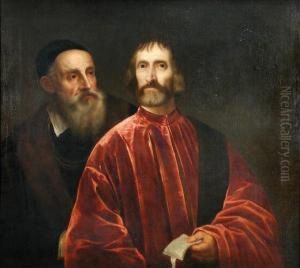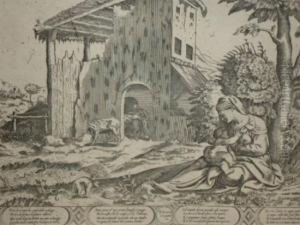Titiano Vecello Paintings
Titian, known in Italian as Tiziano Vecellio or Vecello, was one of the most versatile and influential painters of the 16th century Italian Renaissance. Born between 1488 and 1490 in Pieve di Cadore, a small town at the foot of the Dolomites, now in modern-day Veneto, Italy, Titian embarked on a career that would span over six decades, transforming the landscape of Venetian art. His exact date of birth is uncertain, but his profound impact on European painting is unmistakable.
Titian's early life was marked by his move to Venice, the epicenter of Renaissance art and culture, where he apprenticed with Giovanni Bellini, one of the most esteemed painters of the time. He was also influenced by Giorgione, with whom he collaborated on several works. This early exposure to the vibrant artistic environment of Venice and the tutelage under such masters played a crucial role in shaping Titian's style, characterized by its use of color, luminosity, and innovative compositions.
Throughout his career, Titian became known for his remarkable versatility, producing masterpieces across a range of genres, including religious and mythological scenes, portraits, and landscapes. His ability to imbue his subjects with a profound depth of emotion and realism set new standards. Works such as 'Assumption of the Virgin' (1516-1518) for the Basilica di Santa Maria Gloriosa dei Frari in Venice, and 'Venus of Urbino' (1538) showcase his prowess in handling complex compositions and his innovative use of color to evoke mood and atmosphere.
Titian's reputation extended beyond Venice, attracting the attention of powerful patrons across Europe. He became the principal painter to the Habsburgs, notably Emperor Charles V and later his son Philip II of Spain. This royal patronage allowed Titian to experiment and refine his artistic techniques, culminating in a series of mythological paintings known as 'poesie' for Philip II, which are considered among his finest works.
Despite his success, Titian's later years were marked by personal tragedies, including the loss of his son, Orazio, to the plague. Yet, he continued to paint until his death in 1576, also due to the plague, leaving behind a legacy that would influence generations of artists, from Rubens to Velázquez. His mastery of color, his innovative techniques, and his ability to capture the human condition have cemented Titian's place as a pivotal figure in the history of Western art.

